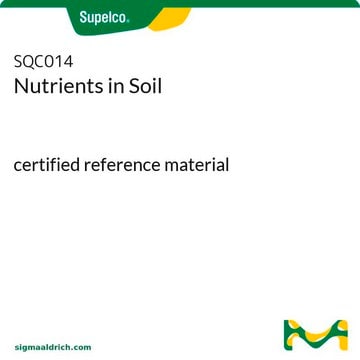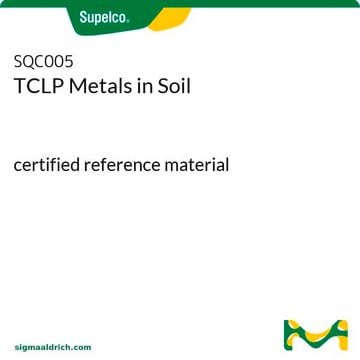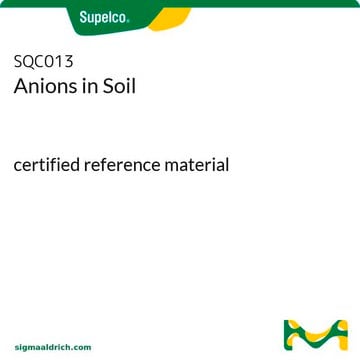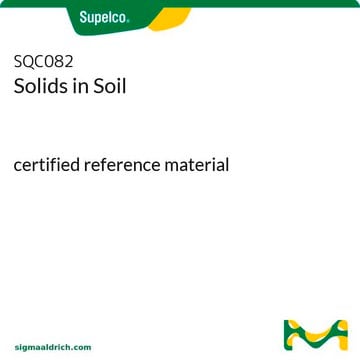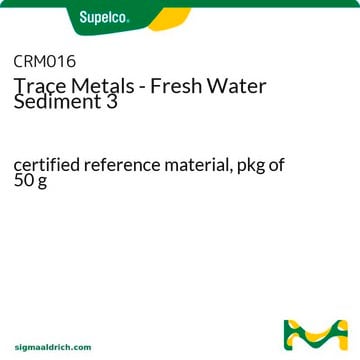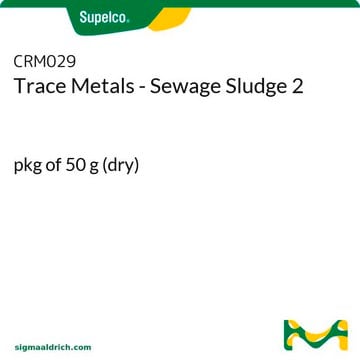SQC001
Metals in Soil
certified reference material
Synonym(s):
Soil matrix CRM, heavy metals
Sign Into View Organizational & Contract Pricing
All Photos(1)
About This Item
UNSPSC Code:
41116107
NACRES:
NA.24
Recommended Products
grade
certified reference material
CofA
current certificate can be downloaded
manufacturer/tradename
RTC SQC-001
technique(s)
AAS: suitable
ICP: suitable
matrix
soil
application(s)
environmental
format
matrix material
storage temp.
2-30°C
Related Categories
General description
This Certified Reference Material (CRM) is produced and certified in accordance with ISO 17034 and ISO/IEC 17025. All information regarding the use of this CRM can be found on the certificate of analysis.
Other Notes
Values of analytes vary lot to lot. Some lots may not contain all analytes.
Signal Word
Danger
Hazard Statements
Precautionary Statements
WGK
WGK 3
Flash Point(F)
Not applicable
Flash Point(C)
Not applicable
Choose from one of the most recent versions:
Already Own This Product?
Find documentation for the products that you have recently purchased in the Document Library.
Xiaowen Ji et al.
Journal of hazardous materials, 408, 124430-124430 (2020-11-13)
A 180-day incubation study was conducted to evaluate the effects of risk elements (REs) on organic carbon use and microbial activities in organic soils in the Arctic during the summer snowmelt period. Soils were artificially spiked with Cd, Pb, Cr
Xiaowen Ji et al.
Archives of environmental contamination and toxicology, 76(4), 540-553 (2019-02-24)
Permafrost-affected region in Russian Arctic is an important study area for investigating fate of trace metals in soils by geological processes and human-induced trace metals through atmospheric deposition. Two plots of soils in Yamal region were selected: Northern Trans-Urals area
Rezvan Davodpour et al.
Archives of environmental contamination and toxicology, 77(3), 344-358 (2019-04-26)
Honeybees, due to their wide-ranging foraging behaviour, have great potentials for monitoring environmental quality. Therefore, the purpose of this study was to use honeybees as bioindicators for the detection of toxic and essential metals (Cd, Cr, Cu, and Fe) in
Our team of scientists has experience in all areas of research including Life Science, Material Science, Chemical Synthesis, Chromatography, Analytical and many others.
Contact Technical Service